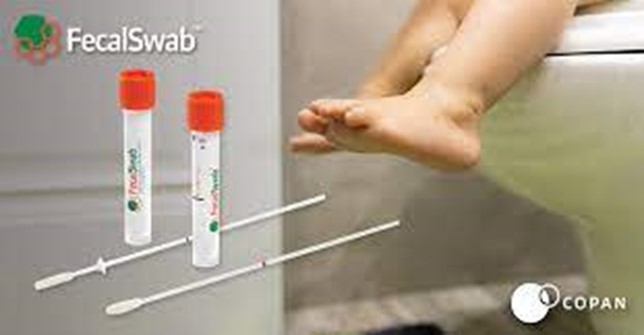A nurse is caring for an adolescent client who has a fractured right tibia and a cast. Which of the following findings should the nurse report to the provider?
Pain following range-of-motion exercises.
Pruritus under the cast.
Presence of swelling while the extremity is dependent.
Coolness of the toes.
The Correct Answer is A
Choice A rationale:
Pain following range-of-motion exercises is a significant finding that should be reported to the provider. It could indicate the possibility of complications, such as further injury or impaired healing. Adolescents with fractured bones are often encouraged to perform range-of-motion exercises to prevent stiffness and promote circulation. However, increased pain during or after these exercises could indicate problems like muscle strain or improper alignment of the fracture, which need to be addressed promptly.
Choice B rationale:
Pruritus (itching) under the cast is common and can be expected due to the accumulation of dead skin cells and sweat. While it can be uncomfortable for the client, it's not an urgent concern that requires immediate reporting to the provider. Strategies to alleviate itching, such as using a cool blow dryer under the cast, can be taught to the client.
Choice C rationale:
The presence of swelling while the extremity is dependent is a normal response to gravity and is not an alarming finding. Swelling when the extremity is dependent is expected, especially within the initial stages of fracture healing. It suggests that the blood supply is reaching the area for healing purposes. Elevation and rest can help reduce the swelling.
Choice D rationale:
Coolness of the toes could be due to reduced blood flow, but this finding alone may not be an immediate concern. It's essential to consider the client's overall circulation, capillary refill, and presence of pulses. If other signs of impaired circulation, such as pallor or delayed capillary refill, are present along with coolness, it might indicate compromised vascular supply. However, based on the information provided, this choice is not as urgent as reporting pain following range-of-motion exercises.
Nursing Test Bank
Naxlex Comprehensive Predictor Exams
Related Questions
Correct Answer is B
Explanation
Choice A rationale:
Implementing fluid restrictions is not recommended for a child with diabetic ketoacidosis (DKA). DKA is characterized by dehydration and electrolyte imbalances, and fluid replacement is a crucial aspect of its management. Restricting fluids could worsen dehydration and hinder the correction of metabolic imbalances.
Choice B rationale:
(Correct Choice) Monitoring vital signs every 8 hours is an important intervention for a school-age child with DKA. Vital signs, including heart rate, respiratory rate, blood pressure, and temperature, provide valuable information about the child's overall condition, fluid status, and response to treatment. More frequent monitoring might be necessary during the acute phase of DKA.
Choice C rationale:
Initiating continuous cardiac monitoring is not typically indicated for a school-age child with DKA. While DKA can have effects on the cardiovascular system, continuous cardiac monitoring is reserved for more critical situations where immediate changes in heart rhythm need to be detected.
Choice D rationale:
Administering subcutaneous insulin 30 minutes before meals is not appropriate for a child with DKA. In DKA management, insulin is typically administered intravenously to achieve more precise control over blood glucose levels. Subcutaneous insulin might not provide the rapid and consistent action needed to address the acute hyperglycemia and metabolic acidosis in DKA.
Correct Answer is A
Explanation
Choice A rationale:
Obtain the specimen by swabbing the infant's rectum using a sterile culture swab. This is the correct choice. When collecting a stool specimen from an infant, the rectal swab method is commonly used. A sterile culture swab helps prevent contamination and ensures accurate results for detecting the presence of ova and parasites in the stool.

Choice B rationale:
Place a urine collection device on the infant until the specimen is obtained. This choice is not appropriate for collecting a stool specimen. A urine collection device is used for collecting urine, not stool. The specimen for ova and parasites needs to be taken directly from the rectum or diaper to accurately identify any infestations.
Choice C rationale:
Transfer the specimen to the collection container using povidone-iodine-soaked gauze. While povidone-iodine is an antiseptic, it is not typically used to transfer stool specimens. Using a sterile swab or a clean, dry container is more suitable for collecting and transporting stool samples to the lab.
Choice D rationale:
Maintain the specimen at room temperature after collection until it is transferred to the lab. Stool specimens for ova and parasites usually require refrigeration to prevent the degradation and growth of potential pathogens. Room temperature might lead to the overgrowth of bacteria and parasites, affecting the accuracy of test results.
Whether you are a student looking to ace your exams or a practicing nurse seeking to enhance your expertise , our nursing education contents will empower you with the confidence and competence to make a difference in the lives of patients and become a respected leader in the healthcare field.
Visit Naxlex, invest in your future and unlock endless possibilities with our unparalleled nursing education contents today
Report Wrong Answer on the Current Question
Do you disagree with the answer? If yes, what is your expected answer? Explain.
Kindly be descriptive with the issue you are facing.
